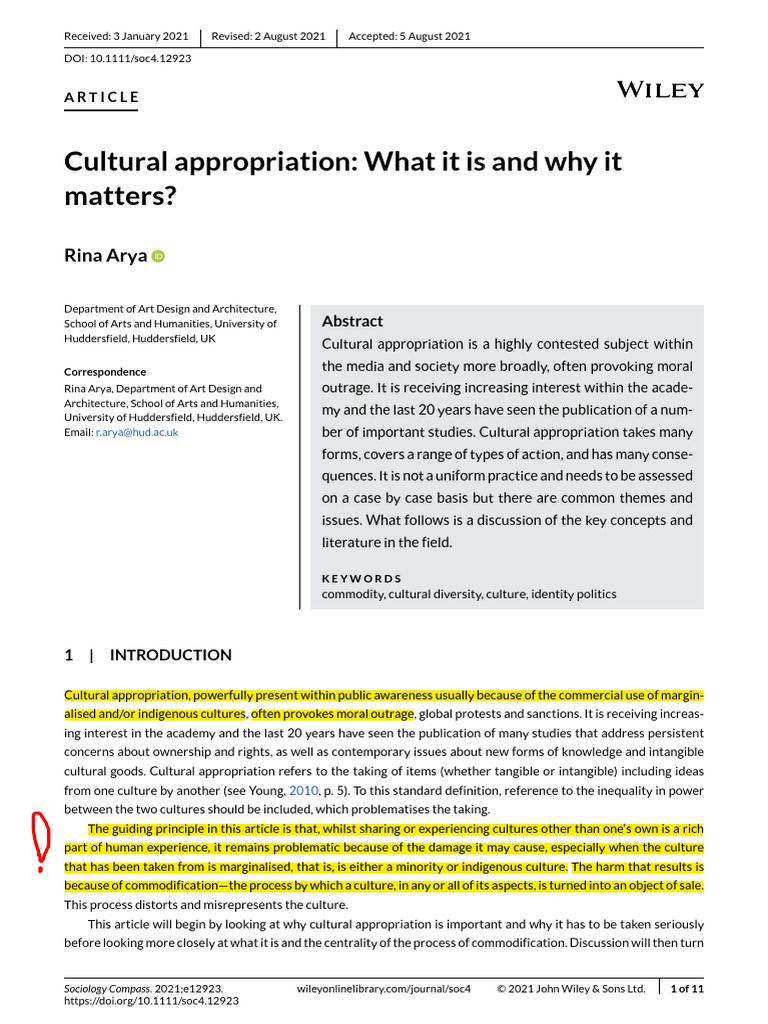Cultural appropriation refers to the adoption of elements of one culture by members of another culture, often without permission or understanding. This practice can lead to significant ethical concerns, particularly when a dominant culture appropriates aspects of a marginalized culture. Negative examples of cultural appropriation are pervasive across various domains, including fashion, music, and art. This discourse examines these examples critically, illuminating the detrimental consequences that may arise from such appropriation.
One of the most visible realms of cultural appropriation is fashion. High-profile designers frequently draw inspiration from indigenous clothing, hairstyles, and accessories, often stripping these symbols of their cultural significance. For instance, the use of Native American headdresses as fashion statements at music festivals has sparked outrage. These headdresses, deeply rooted in the spiritual and cultural practices of Native tribes, are reduced to mere aesthetic accessories, disregarding their profound meaning and the historical context surrounding them. This commodification not only trivializes the culture but also contributes to the erasure of the narratives associated with those cultural items.
Moreover, the appropriation of traditional garments can be observed in the ubiquitous use of kimonos in Western fashion. High-end fashion brands often relegate this quintessential Japanese attire to mere costume, often failing to acknowledge its symbolism and the rich cultural heritage it represents. When designers present these garments on runways, they frequently do so without the respect that cultural ownership necessitates. Consequently, this act can perpetuate harmful stereotypes while depriving the original creators and communities of proper recognition and economic benefit.
Music is another arena rife with cultural appropriation, particularly within the genres of hip-hop and pop. White artists frequently adopt the stylistic elements of Black music without acknowledging their heritage or the socio-political struggles that underpin them. A notable example is the phenomenon of “whitewashing” in the music industry, where Black artists face difficulties securing mainstream recognition, while white artists are celebrated for the same styles. This inequitable dynamic not only marginalizes the voices of original creators but also commodifies their experiences without giving credit where it is due.
Moreover, artists like Miley Cyrus have faced backlash for appropriating elements of hip-hop culture during their transitions into this genre, often adopting a “black face” aesthetic. The paradox becomes glaringly apparent — these artists reap the benefits of cultural motifs yet remain unscathed by the consequences that often haunt their Black predecessors. Such dissonance raises critical questions about authenticity, privilege, and the responsibilities borne by artists when engaging with cultural elements outside their own.
In the realm of art, the appropriation of cultural motifs can lead to a homogenization of aesthetics that erases the individual identities of marginalized cultures. Artists like Jean-Michel Basquiat have drawn inspiration from African and Caribbean heritage, but their work often garnered appreciation that was not extended to many creators within those cultures. The appropriation of Indigenous art forms by contemporary artists can be particularly problematic – when elements such as totemic imagery or traditional patterns are co-opted, it not only obfuscates their original meanings but can also deprive indigenous artists of fair economic participation in their creative expressions.
Furthermore, cultural appropriation frequently manifests in the culinary arts. The commercialization of traditional food practices often results in the simplification and distortion of recipes that carry cultural narratives. Fusion cuisine, though innovative, may neglect the roots and stories of the original dishes, leading to a commodification that strips away the cultural significance. For instance, a sushi restaurant might serve “California rolls” without acknowledging the traditional techniques and values embedded in sushi-making that have been developed over generations. This simplification contributes to a misunderstanding of cultural richness and diversity.
Moreover, the issue of language appropriation also warrants attention. The casual use of culturally specific vernacular or phrases can trivialize the experiences associated with them. For instance, phrases rooted in African American Vernacular English (AAVE) often receive widespread adoption among non-Black individuals, stripping away the cultural context and watering down the nuances inherent in their usage. Such appropriation can perpetuate stereotypes while reinforcing systemic inequalities, underscoring the need for awareness and sensitivity in the adoption of linguistic elements.
So, what are the implications of such appropriation? Primarily, it undermines cultural authenticity and perpetuates a cycle of exploitation and erasure. When cultural elements are commodified, they often lose their profound meanings and contexts. This denial of cultural dignity has tangible consequences, leading to feelings of dislocation among members of the original cultures. Additionally, the appropriation of cultural symbols can provoke significant backlash and resentment, as many feel their traditions and identities are being exploited for profit or aesthetic pleasure.
To foster a more respectful engagement with different cultures, it is crucial to promote dialogue and understanding. Encouraging cultural exchange that is rooted in mutual respect and appreciation can mitigate the adverse effects of cultural appropriation. Supporting creators from marginalized groups and amplifying their voices can help to contribute to a more equitable representation in various cultural spheres. Ultimately, recognizing the value of cultural integrity and acknowledging the histories and narratives that accompany cultural expressions are essential in navigating the complexities of cultural interactions.
